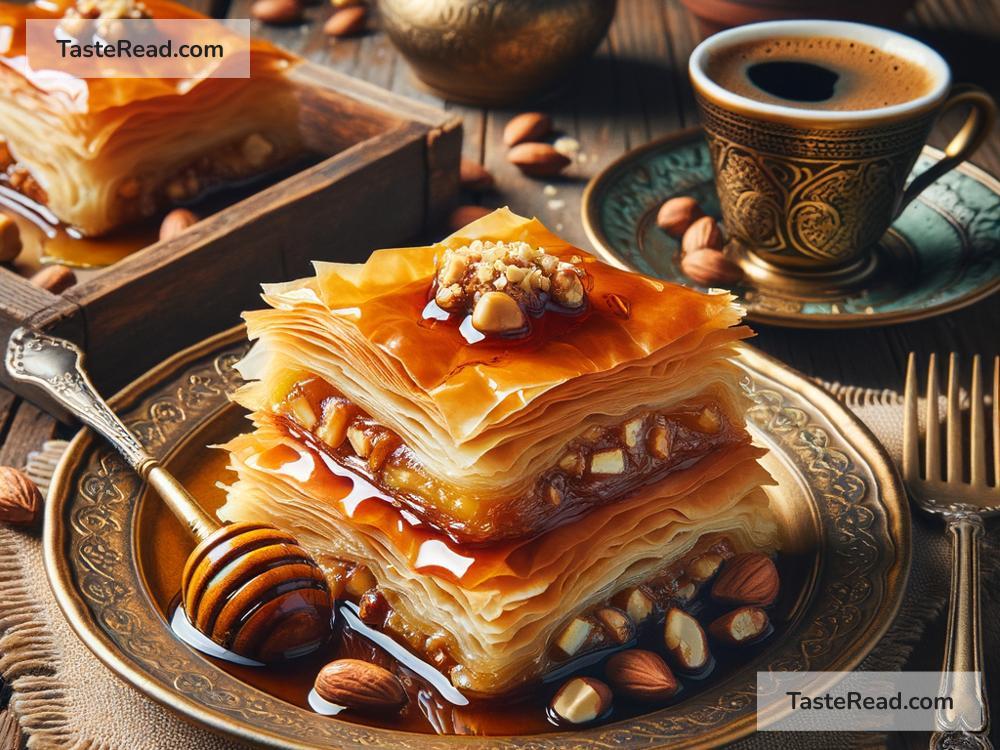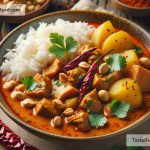Discovering the Sweet Side of Turkey Through Baklava
When talking about Turkish cuisine, one cannot simply skip over its sweet and decadent treasure – Baklava. This rich, sweet pastry is more than just a dessert in Turkey; it’s a piece of culture, tradition, and celebration. Let’s dive into the world of Turkish Baklava and explore the flavors that make it a delightful experience for anyone with a sweet tooth.
What is Baklava, Exactly?
Baklava is a stunning masterpiece created from layers upon layers of thin, flaky pastry, known as phyllo (or filo) dough, which is then filled with a mix of chopped nuts, sweetened with syrup or honey, and crafted into various shapes and sizes. Originating from the rich tapestry of Middle Eastern cuisine, Baklava has made its home in the hearts of Turkish people and their culinary tradition.
The Building Blocks of Flavor
The secret to Baklava’s irresistible taste lies in its simple yet profound ingredients:
– Phyllo Dough: The ultra-thin sheets of dough lend Baklava its characteristic flaky texture.
– Nuts: Typically, walnuts, pistachios, and hazelnuts are used, either singly or mixed, adding depth and crunch.
– Butter: Melted butter brushed between each layer of phyllo dough contributes to the richness of the dessert.
– Syrup or Honey: The sweet cloak that binds the flavors together is often flavored with lemon, rose water, or orange blossom water for an extra zing.
The Variety That Beckons
Turkish Baklava comes in various styles and tastes; each region of Turkey boasts its version, making Baklava a universe of flavors waiting to be explored. Here’s a glimpse into some of the must-try types:
-
Classic Pistachio Baklava: The king of all Baklavas, where finely crushed pistachios meet the golden, buttery layers of phyllo, harmonized with the sweetness of syrup.
-
Walnut Baklava: A slightly less sweet but equally tantalizing version, preferred by those who enjoy the robust flavor of walnuts.
-
Sarı Burma: For those who love textures, Sarı Burma offers layers of crispy dough encasing a center filled with pistachios or walnuts, rolled into a turban shape, and soaked in syrup.
-
Şöbiyet: A softer version of Baklava, generously filled with clotted cream (kaymak) and pistachios, offering a delightful contrast of textures.
-
Antep Baklavası: Hailing from Gaziantep, a city recognized by UNESCO for its culinary culture, this Baklava is made using local pistachios and has a reputation for being incredibly thin and full-flavored.
A Dessert for All Occasions
In Turkey, Baklava is more than just a dessert; it’s a symbol of hospitality, celebration, and craftsmanship. Served during religious holidays like Ramadan and Eid, at weddings, and as a warm welcome to guests, it’s a gesture of kindness and generosity. The making of Baklava is considered a form of art, often handed down through generations, preserving the tradition and perfection of this beloved dessert.
Tasting the Tradition
If you ever find yourself in Turkey, visiting a traditional Baklava shop is a must. The experience of choosing from an array of beautifully presented trays, each glistening with syrup and sprinkled with crushed nuts, is unforgettable. But worry not, with Turkish cuisine gaining popularity worldwide, it’s getting easier to find authentic Baklava in local Middle Eastern or Mediterranean markets globally.
For those adventurous souls in the kitchen, making Baklava at home is a rewarding experience. While it might seem daunting at first, with patience and practice, you can bring a piece of Turkish joy to your table. Remember, the essence of good Baklava lies in quality ingredients and layer upon layer of love.
Embracing the Sweetness
In a world where desserts come and go, Turkish Baklava stands the test of time, offering a sweet embrace of history, culture, and unmatched flavor. Whether you’re savoring a piece over a cup of Turkish tea or ending a feast with its rich sweetness, Baklava promises a culinary journey through the heart of Turkey. So, the next time you indulge in this sumptuous treat, remember, you’re not just eating a dessert; you’re savoring centuries of tradition, one flaky layer at a time.
Turkish Baklava, with its myriad variations and deep-rooted history, is a testament to Turkey’s rich culinary culture. Each bite tells a story of tradition, passion, and the art of dessert making. It beckons you to explore its layers, understand its essence, and appreciate the mastery that goes into creating it. So here’s to exploring and enjoying the many flavors of Turkish Baklava, a sweet journey that promises to be as enriching as it is delightful.


